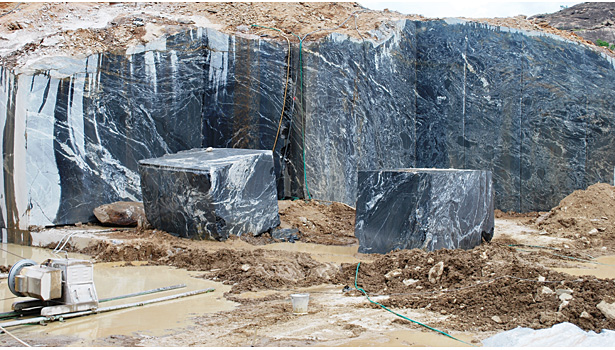Checking Out Granite Quarries in South Africa Sector: From Quarry to Masterpiece
Checking Out Granite Quarries in South Africa Sector: From Quarry to Masterpiece
Blog Article
Discovering the Rich Background and Lasting Practices of Granite Quarrying
As we base on the precipice of uncovering the detailed tapestry of granite quarrying, a journey through time discloses not simply the physical act of removing stone however also the cultural and historical significance woven right into the extremely fabric of this method. From the ancient beginnings that laid the foundation for contemporary quarrying strategies to the lasting methods that are forming the future of this market, each chisel mark on granite surfaces tells a tale waiting to be uncovered (granite quarries in south africa). The tradition of granite quarrying stretches far beyond simple removal; it is a testimony to human resourcefulness, strength, and the enduring allure of this marvelous rock
Old Beginnings of Granite Quarrying
Going back to ancient people, the practice of quarrying granite has been an indispensable part of human history and architectural improvement. The earliest evidence of granite quarrying go back to ancient Egypt, where enormous pyramids and elaborate sculptures were crafted from this sturdy stone. The Egyptians used primitive tools to remove granite blocks from quarries, showcasing the importance of this product in their significant building and constructions.
Moving on in background, the Greeks also made considerable payments to the quarrying of granite. The Greeks made use of granite in various architectural wonders, such as temples and statuaries, showing their skill in shaping and carving this hardy stone. The Romans further fine-tuned the strategies of quarrying granite, utilizing advanced devices like knives and hammers to extract and shape granite for their legendary frameworks.
Via the centuries, the practice of quarrying granite has actually advanced, with modern technologies enhancing effectiveness while preserving the classic allure of this all-natural stone - granite quarries in south africa. From old people to contemporary building contractors, the tradition of granite quarrying remains to form our world
Evolution of Quarrying Methods
The advancement of quarrying strategies has been marked by a continual development towards higher efficiency and precision in extracting granite. From the simple approaches used by our forefathers to the innovative modern technologies made use of in modern-day quarrying procedures, the market has actually undertaken substantial improvements. Early quarrying strategies entailed manual work with basic devices such as chisels, hammers, and wedges to remove granite blocks from the earth. As human beings proceeded, strategies like fire-setting and primitive dynamites were introduced to promote the removal procedure.
In even more current times, the advent of machinery reinvented the quarrying sector, enabling quicker extraction prices and enhanced efficiency. Technologies such as diamond cord saws, high-pressure water jets, and pneumatically-driven drills have ended up being basic in modern quarries, enabling specific cutting and decreased waste. Innovations in computer-controlled equipment and 3D modeling have actually optimized quarrying operations, leading to minimal environmental effect and boosted sustainability techniques. As the demand for granite remains to increase, the development of quarrying techniques stays important to meeting sector needs successfully and official statement sustainably.
Social Importance of Granite
Granite holds a profound social relevance across different civilizations because of its long-lasting visibility in building masterpieces and prized monoliths. From the stunning pyramids of Egypt to the detailed carvings of the Angkor Wat holy place in Cambodia, granite has been a material of selection for revealing grandeur and longevity in cultural heritage. In pop over to this web-site ancient Rome, granite columns adorned holy places and public structures, representing strength and permanence. The social significance of granite extends beyond its physical attributes; it personifies strength, security, and timelessness, making it a sign of sustaining traditions and customs.

Sustainable Practices in Quarrying
In the middle of the rich history of granite quarrying and its cultural relevance exists a growing emphasis on sustainable techniques within check out here the market. As environmental recognition and concerns about source deficiency have actually enhanced globally, the quarrying field has actually progressively embraced lasting approaches to reduce its influence on the setting and surrounding areas.

Additionally, improvement and recovery of quarry websites post-extraction are essential to lasting practices. By restoring quarried areas to a natural or valuable state, such as creating wild animals habitats or recreational areas, quarriers can counter the environmental footprint of their procedures and contribute positively to the regional ecological community.
Heritage of Granite Quarrying
With a historical backdrop steeped in craftsmanship and industrial progression, what enduring impact has granite quarrying left on the landscape of contemporary society? The heritage of granite quarrying goes beyond plain extraction practices; it has actually formed building wonders, urban landscapes, and social heritage worldwide. The durable nature of granite has actually made it a recommended choice for monuments, buildings, and infrastructure, standing as a testimony to the ability and virtuosity of quarry employees across generations.
In addition, the financial impact of granite quarrying can not be ignored. The industry remains to give employment possibilities and drive neighborhood economic climates in regions where granite extraction is prevalent. It has additionally spurred technological innovations in quarrying strategies and devices, causing extra efficient and lasting practices.
In terms of sustainability, the tradition of granite quarrying includes initiatives to minimize ecological effects through improvement jobs and liable resource monitoring. By stabilizing financial passions with ecological stewardship, the sector strives to guarantee that future generations can remain to benefit from this long-lasting natural deposit.
Final Thought

Report this page